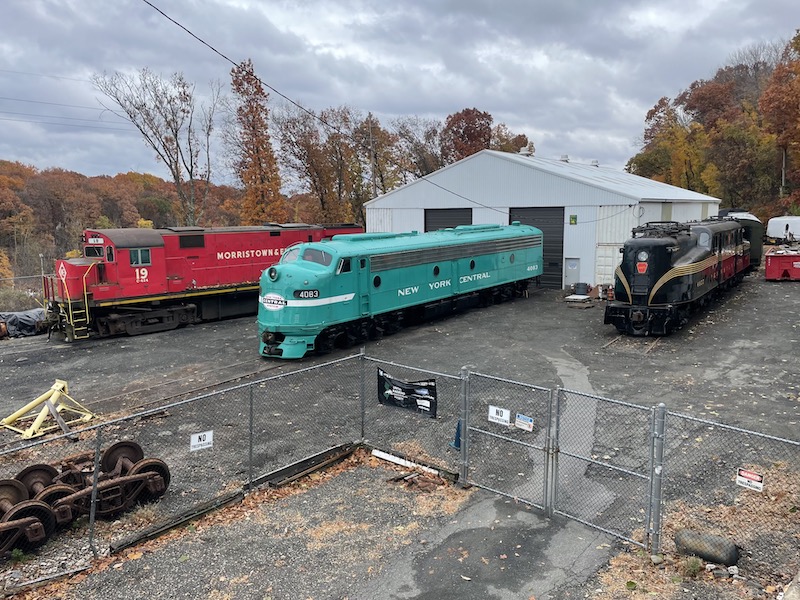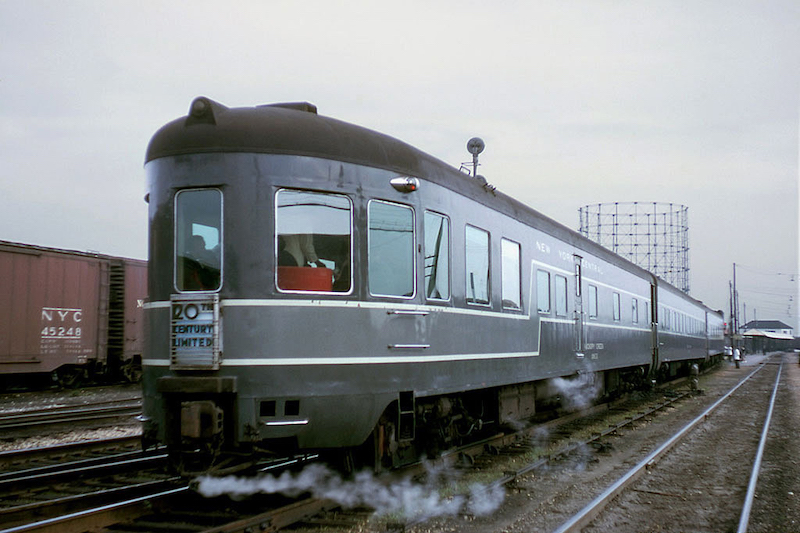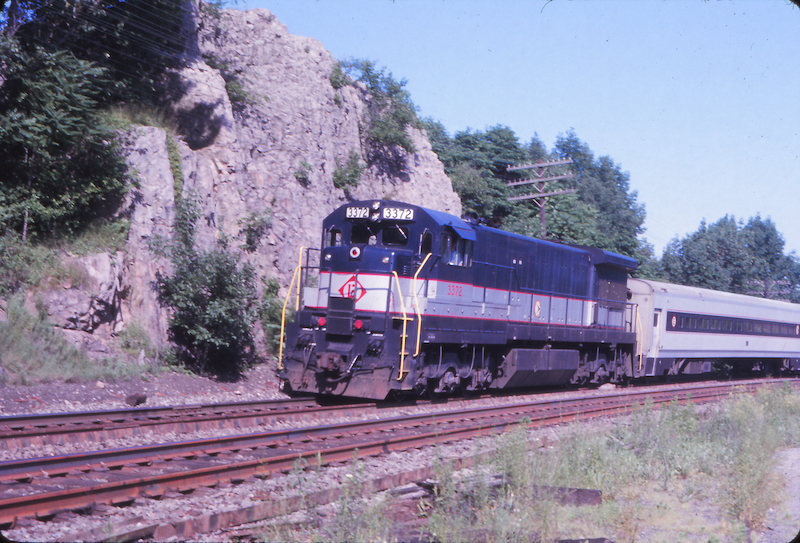By Justin Franz
BOONTON, N.J. — This week, the United Railroad Historical Society of New Jersey announced it had hired its first full-time employee in the organization’s 36-year history. Longtime volunteer Kevin Phalon will serve as the non-profit’s executive director following a career in television news.
Phalon is no stranger to the organization and was elected president of URHS in 2020. In the years that followed, he led the New Jersey-based group through the pandemic, helped the group through two major legal actions that resulted in the recovery of funds and property owed to the group and helped establish the wildly-popular Hudson River Rail Excursions out of New York City. He also helped lead the group in renovating its shop in Boonton, where the non-profit is now working with a contractor to restore the last General Electric U34CH locomotive.
As Phalon settled into the new job, Railfan & Railroad asked him about the future of the URHS, why it was important to hire an executive director now and what advice he has for other young people in rail preservation (at 27 he is among the youngest executive directors in the industry).

The URHS collection in Boonton, N.J., included a number of locomotives historic to the region, including Morristown & Erie C424 19, New York Central E8 4083 and two Pennsylvania Railroad GG-1s (4877 is seen here). Photo Courtesy of URHS.
Tell us a little bit about your background in railroading and preservation.
I come from a railroad family. My grandfather started on the Erie in 1955, my uncle was a conductor for NJ Transit, and my brother is the superintendent of Morristown & Erie Railway. I spent a few summers working for M&E as well. For a career though, I followed my father’s path as a journalist. I have always been fascinated by railroading as a profession and as a topic of history.
I started volunteering with URHS as soon as I was old enough to drive myself to Boonton Yard. As I grew older, I learned more and more on the job and took on more responsibility. My interest in URHS became less about keeping myself entertained on the weekend and more about figuring out the group’s long-term plans. I became Vice President when I was 23 and my primary goal since then has been to make sure URHS is fulfilling its public education mission.
What was the impetus for URHS to hire a full-time executive director?
The impetus to hire an employee of any kind was the operational needs of Hudson River Rail Excursions. Since we began the program, we have sold out every single trip. With a waiting list of more than 7,000, we simply had to run more trips than we were capable of running in our volunteers’ spare time. URHS transformed from a small, all-volunteer club to the equivalent of a midsized tourist railroad over the course of about a year. There are a lot of unforeseen consequences that come along with newfound success–but those are all good problems to have. Hiring someone to manage the business full-time solves all those issues, and allows us to expand the program schedule substantially.

Using the former New York Central observation car Hickory Creek, URHS has launched a wildly successful excursion program out of New York City. Photo Courtesy of URHS | Bob Krone Collection.
The reason for hiring an executive director though, as opposed to an excursion manager, is that URHS wants to be in the museum business, not just the railroad business. Our mandate as a non-profit is to educate, and our primary focus has to be teaching the public. To do that, in the short term, we plan on running more trains, holding more events, and having our collection accessible to more people more often. In the long-term, we have aspirations of a spectacular, indoor/outdoor, operating museum, but we need to take those aspirations and turn them into workable, long-term plans. With an executive director, we will be able to balance our short-term and long-term goals and have one person give them both their full-time attention.
What do you think are the biggest challenges facing URHS and rail preservation as a whole?
As I see it, the gap between small and large rail organizations is widening. Many smaller groups are dying out, and at the same time, larger ones are celebrating their best year to date. Railroad preservation is certainly growing as a whole, but as time wears on, the weak among us will inevitably be left behind. In the process, we will lose good artifacts that were saved and restored with the best of intentions.
This has always been my fear for URHS. This is why I am focused on growth for our organization. URHS wants to build one big museum here in New Jersey that is nothing less than spectacular. Not just because that would be fun, but because a museum that can maintain the public’s interest forever is vital to the survival of our collection. I think often of the quote from architect Daniel Burnham, “Make no little plans. They have no magic to stir men’s blood and probably will not themselves be realized.”
We are not the only organization in New Jersey that needs a permanent home, and our plans include bringing those others into our efforts as well. I think our industry as a whole would benefit from the pooling of collections and resources. Larger organizations have much greater means and fundraising power. With that comes stability, better facilities, and most importantly, better public offerings.
Among the many projects URHS is tackling right now, what are you most excited about?
Certainly, our most exciting project is the restoration of Erie Lackawanna 3372. It is the last of the first of its kind—the only GE U34CH left in existence. The U34CH was the singular biggest milestone in the modernization of commuter railroads in New Jersey. It was the standard bearer for the locomotives and cars we still use today.
Last year, we worked with FMW Solutions to evaluate the condition of 3372 and determined that it absolutely can and deserves to run again. These engines were unique in their day, and they left an indelible impression on the people who ran them, fixed them, and rode behind them. Many of those folks will get to relive a bit of their own past when they hear 3372 run again.
Because these engines are so beloved in New Jersey, we intend to crowdfund as much of this project as we can. You can donate online at URHS.org/u34ch.

URHS announced in 2022 that it would restore Erie Lackawanna U34CH 3372 to operation. Photo Courtesy of URHS.
As one of the youngest executive directors in rail preservation, what advice do you have for other young people getting involved with the industry?
I consider myself uniquely fortunate to have the opportunities I have had in my 20s. I have spent 10 years as a volunteer building my skill set and guiding principles based on what I see others do well. My advice to other young people is to never stop learning. Make friends, ask questions, ride trains, tour shops, visit museums, and take every single good practice you see and hear.
I highly recommend familiarizing yourself with the Secretary of the Interior’s Standards for the Treatment of Historic Properties. Railroad preservation is a constant debate between what is proper and what is practical, but these guidelines are at least a great North Star to guide your work and yield the best end product possible.
Finally, never allow yourself to be deterred by the inevitable politics of volunteer organizations. There is not an organization on this earth that does not need young people–some groups just take longer to realize that fact. I and my colleagues have seen the benefits of sticking to the mission, no matter how frustrating the process, and URHS is better off for it. I truly trust the people I work with today, and I am lucky to be in the position I am today because they trust me.



